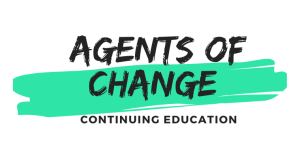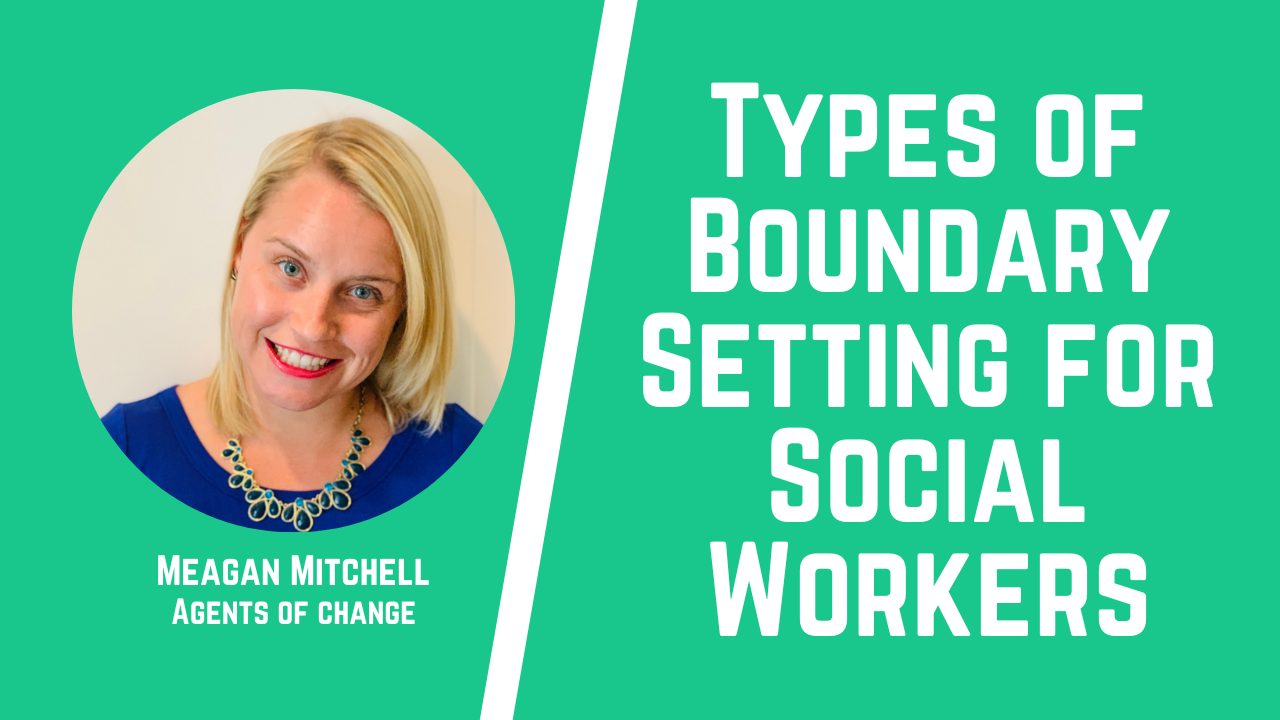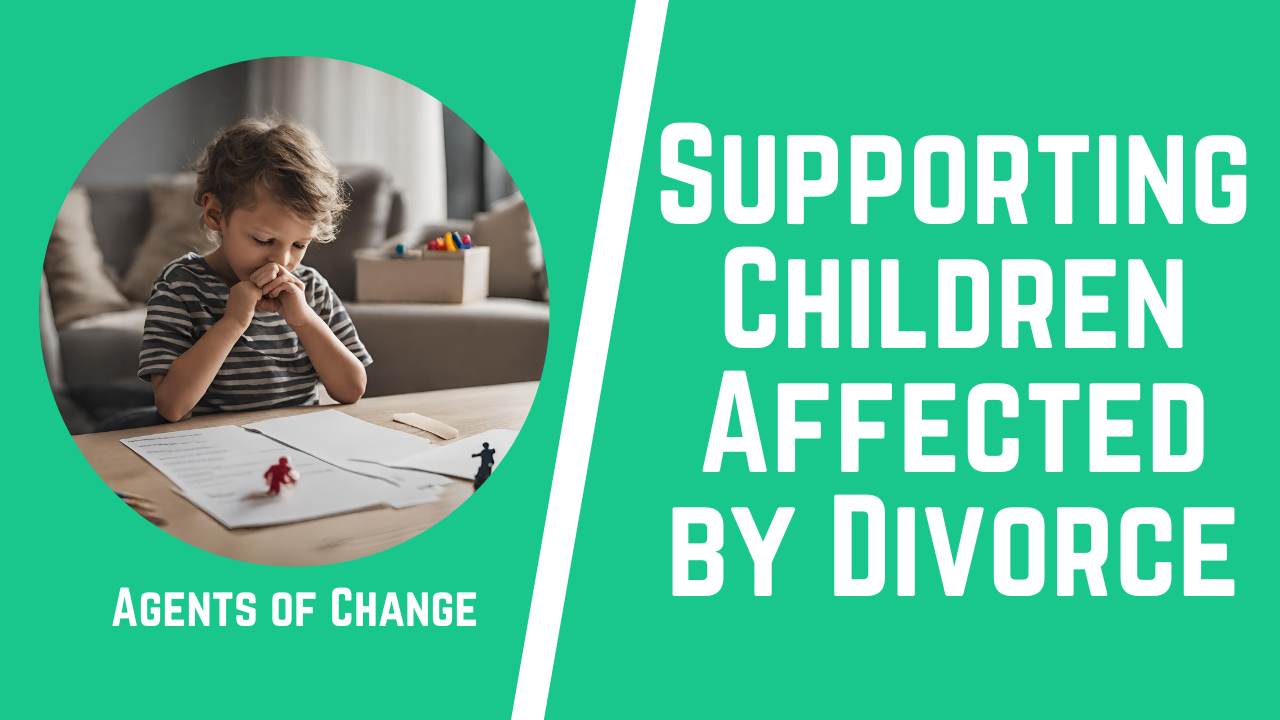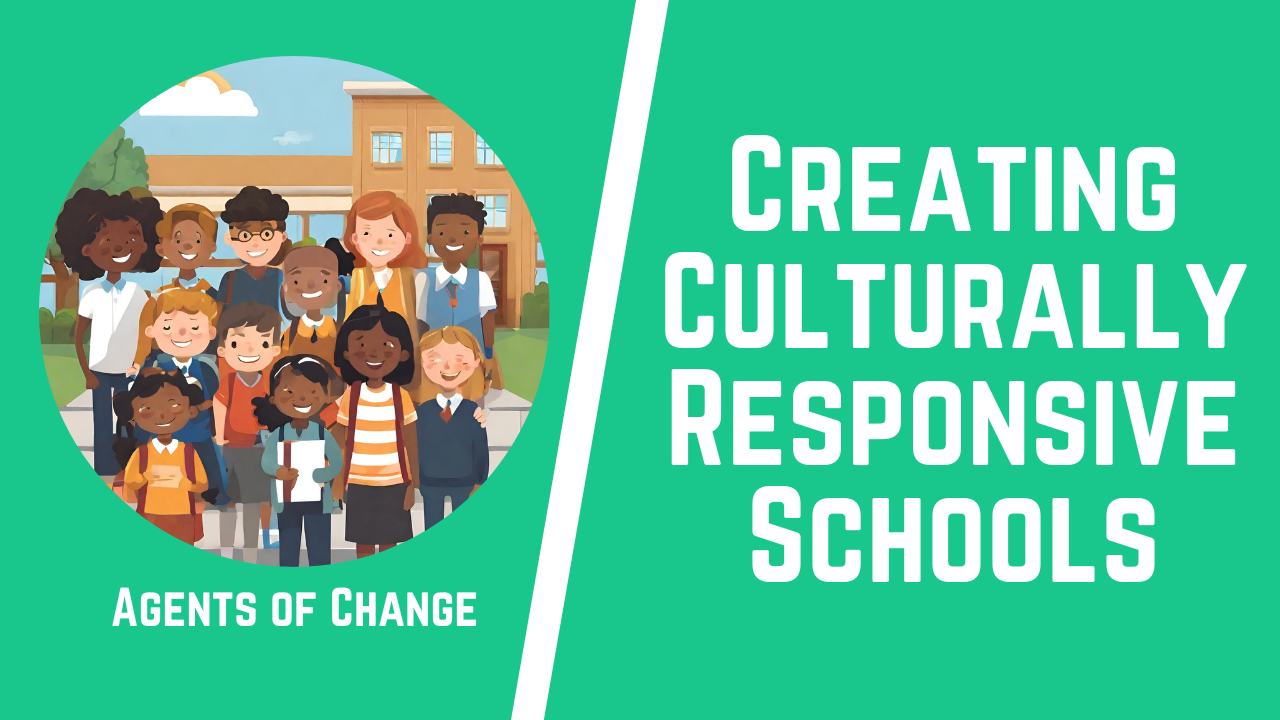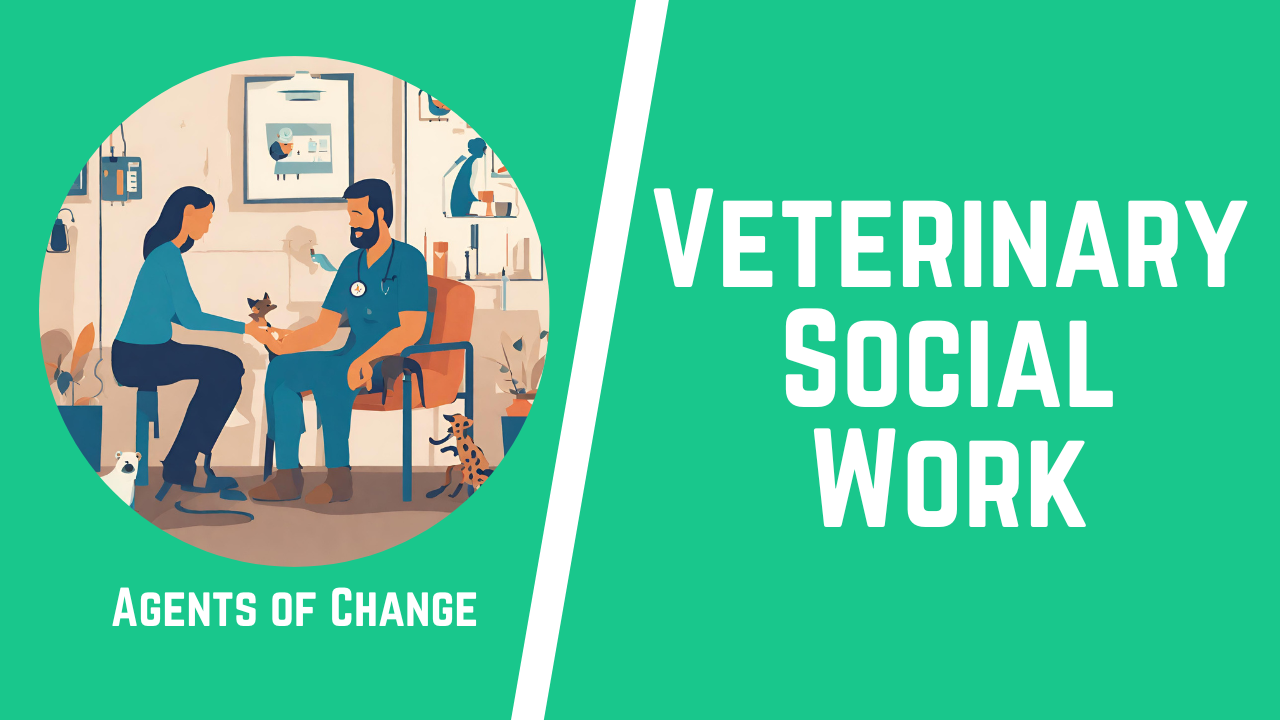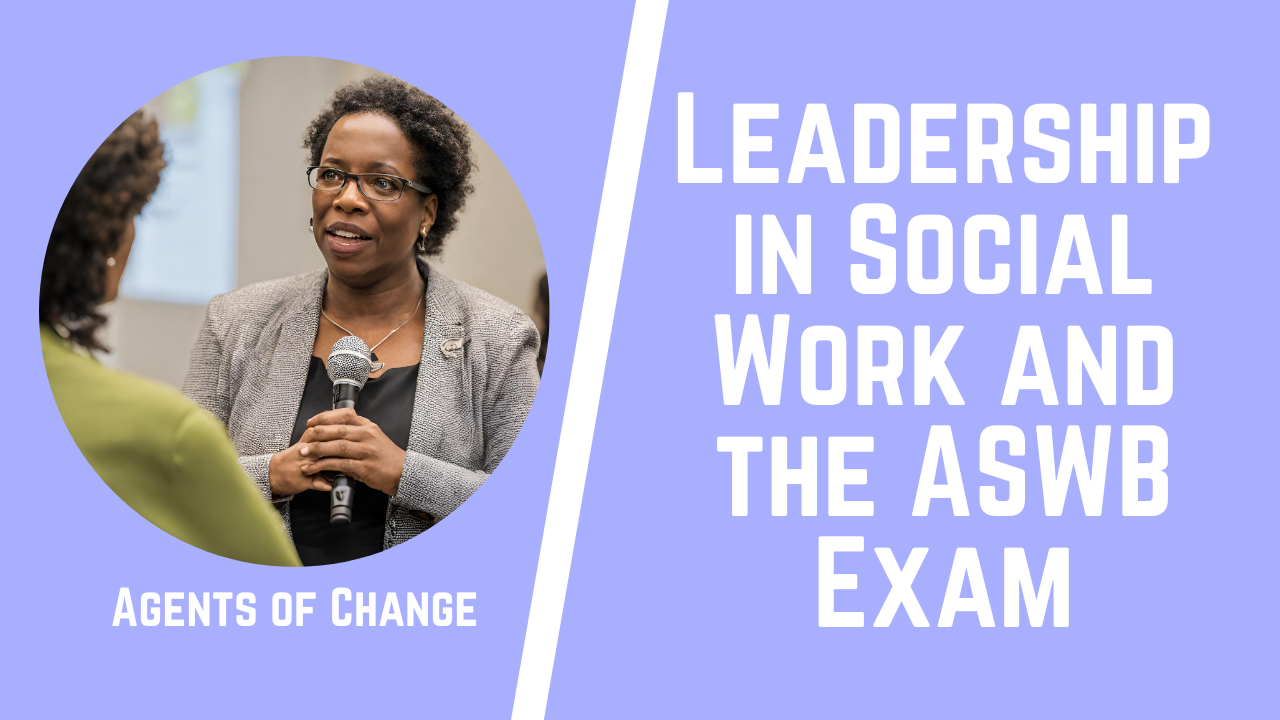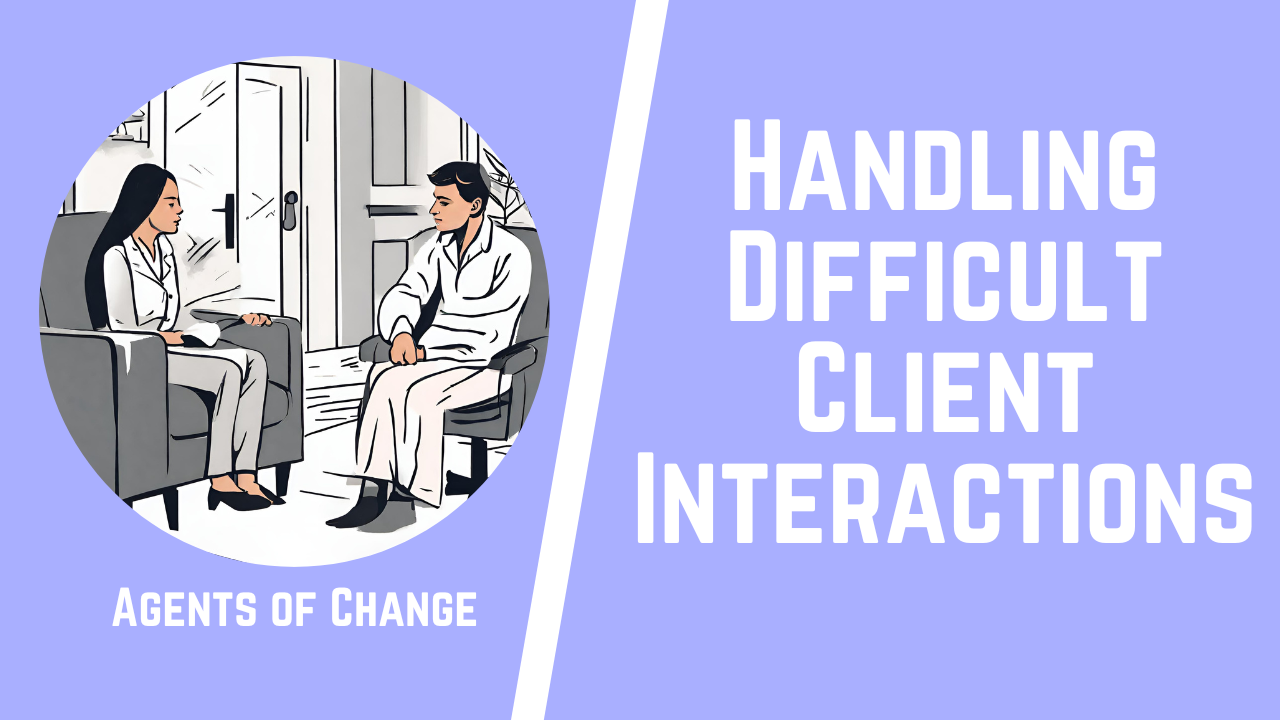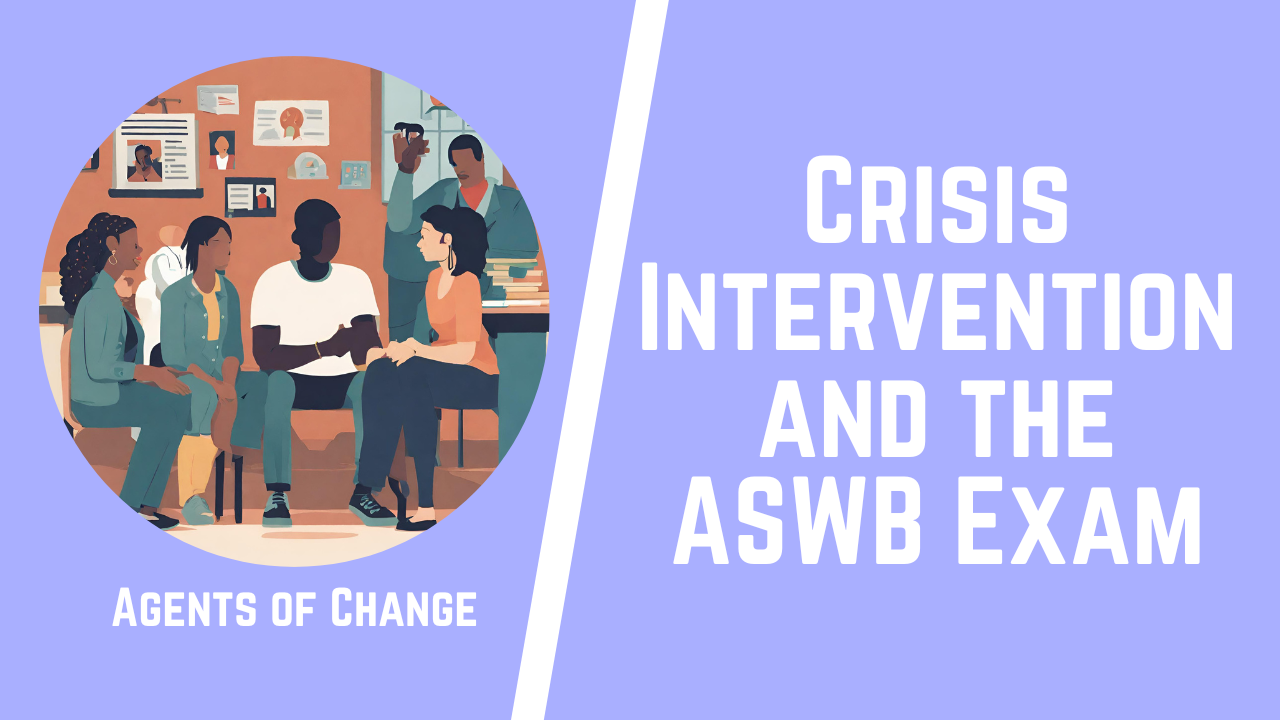In Social Work, the lines between personal and professional often blur, creating a challenging landscape for those dedicated to making a difference. Boundary setting is a critical skill that ensures the safety, integrity, and effectiveness of both the Social Worker and the client.
In this post, as we explore the different types of boundary setting for Social Workers, remember that these boundaries are not walls but rather bridges—tools that foster understanding, respect, and genuine connection.
The importance of establishing clear boundaries cannot be overstated, acting as the guardrails that protect the emotional, physical, and professional well-being of both parties involved. From professional and emotional, to time and social media boundaries, each type plays a pivotal role in shaping the dynamics of the client-Social Worker relationship.
Did you know? Agents of Change Continuing Education offers Unlimited Access to 150+ CE courses for one low annual fee to meet your state’s requirements for Continuing Education credits.
We’ve helped thousands of Social Workers with Continuing Education, learn more here about Agents of Change and claim your 5 free CEUs.
1) Why Boundaries Matter
Boundaries in Social Work are the foundation that supports healthy, effective, and ethical relationships between Social Workers and their clients.
Establishing clear boundaries is crucial for several reasons, each contributing to the overall well-being of both the Social Worker and the client, as well as the integrity of the service provided.
Protecting Professional Integrity
- Clear Ethical Lines: Boundaries help maintain the profession’s ethical standards by clearly delineating what is and isn’t appropriate in the Social Worker-client relationship.
- Preventing Role Confusion: By establishing clear boundaries, Social Workers can avoid situations where their role becomes blurred, ensuring that their primary focus remains on the client’s well-being.
- Upholding Professional Standards: Boundaries reinforce the professional nature of the relationship, reminding both parties that the interaction is based on trust, respect, and a shared goal of positive outcomes.
Safeguarding Emotional Well-being
- Emotional Safety: Boundaries provide emotional safety for clients, creating a secure space where they feel comfortable sharing sensitive information.
- Preventing Burnout: For social workers, setting emotional and time boundaries is vital in preventing burnout, ensuring they can provide the best care without depleting their emotional reserves.
- Maintaining Objectivity: Emotional boundaries help Social Workers maintain the necessary objectivity to make clear, informed decisions that are in the best interest of their clients.
Ensuring Personal Safety
- Physical Safety: Boundaries around personal space and physical interactions protect both social workers and clients from potential harm or misunderstandings.
- Privacy Protection: Setting boundaries around personal information and social media helps safeguard the personal privacy of both Social Workers and their clients.
Enhancing Relationship Effectiveness
- Building Trust: Clear boundaries help build trust between Social Workers and clients, as clients feel secure knowing that their interactions are professional and respectful.
- Facilitating Open Communication: When boundaries are clearly defined, clients are more likely to feel comfortable communicating openly, enhancing the effectiveness of the intervention.
- Empowering Clients: By modeling healthy boundary setting, Social Workers can empower clients to establish and maintain their boundaries in other relationships, contributing to their overall well-being and personal growth.
The Impact of Well-Defined Boundaries
- Professional Growth and Development: Social Workers who effectively set boundaries find more satisfaction in their work, leading to professional growth and a greater impact on those they serve.
- Client Progress: Clients benefit from the structure and security that come with well-defined boundaries, often showing greater progress in achieving their goals.
- Sustained Engagement: Boundaries help prevent the common pitfalls of over-involvement or detachment in the Social Worker-client relationship, fostering sustained engagement and support.
Agents of Change Continuing Education offers Unlimited Access to 150+ CE courses for one low annual fee to meet your state’s requirements for Continuing Education.
2) Different Types of Boundary Setting for Social Workers
Professional Boundaries: The Cornerstone of Ethical Practice
Professional boundaries define the space where the personal ends and the professional begins. They are crucial for:
- Maintaining a Professional Identity: Helps Social Workers present themselves in a manner that emphasizes their role and responsibilities.
- Ethical Decision-Making: Guides Social Workers in making decisions that prioritize the client’s best interest, free from personal bias.
- Role Clarity: Clearly outlines the expectations and limits of the Social Worker-client relationship, preventing role confusion.
Key Points for Implementation:
- Always communicate professionally, using appropriate channels.
- Avoid dual relationships that can conflict with or compromise professional judgment.
- Keep personal opinions and beliefs separate from professional advice.
Emotional Boundaries: Preserving Emotional Health
Emotional boundaries are essential for managing the intense emotions that can arise in Social Work. They are key for:
- Emotional Self-Protection: Helps Social Workers avoid taking on the emotional burden of their clients.
- Empathy without Over-Identification: Allows for understanding and empathy without becoming overly emotionally involved.
- Professional Objectivity: Maintains the ability to make clear-headed, objective decisions on behalf of the client.
Key Points for Implementation:
- Practice self-awareness to recognize when personal emotions are influencing professional interactions.
- Utilize supervision and peer support to process difficult cases or emotions.
- Develop self-care strategies to manage stress and emotional fatigue.
Time Boundaries: Balancing Availability and Personal Time
Time boundaries are about managing one’s time effectively to serve clients well while also attending to personal needs. They involve:
- Defined Work Hours: Setting clear expectations for when you are available to clients and colleagues.
- Prioritization of Tasks: Ensuring that time is allocated effectively between clients based on urgency and need.
- Self-Care Time: Dedicating time for personal rest, relaxation, and rejuvenation to prevent burnout.
Key Points for Implementation:
- Communicate availability clearly to clients, including response times for communications.
- Use scheduling tools to manage and allocate time efficiently.
- Ensure regular breaks and days off are taken to maintain work-life balance.
Social Media and Technology Boundaries
In the age of digital communication, setting boundaries around the use of social media and technology is crucial. These boundaries are important for:
- Maintaining Professionalism Online: Keeping personal and professional online personas separate.
- Protecting Client Privacy: Ensuring that no client information is shared, intentionally or unintentionally, online.
- Avoiding Dual Relationships: Preventing connections with clients on social media that could blur professional boundaries.
Key Points for Implementation:
- Use privacy settings to manage who can see personal information and posts.
- Refrain from engaging with clients on personal social media accounts.
- Keep communication with clients to professional platforms and email.
Personal Space Boundaries: Respecting Physical Space
Personal space boundaries refer to the physical distance maintained between Social Workers and their clients, important for:
- Respecting Comfort Levels: Recognizing and honoring personal space preferences.
- Non-Verbal Communication: Using physical space to communicate professionalism and respect.
- Safety: Ensuring both Social Worker and client feel safe and respected during interactions.
Key Points for Implementation:
- Be mindful of cultural differences in personal space expectations.
- Use professional settings for meetings to reinforce physical boundaries.
- Recognize and address any breaches of personal space respectfully and promptly.
Integrating Boundary Setting into Social Work Practice
Effectively integrating these types of boundary-setting into Social Work practice requires ongoing reflection, education, and support. Resources like Agents of Change Continuing Education can provide Social Workers with the tools and knowledge to navigate boundary complexities confidently.
3) Navigating Boundary Challenges and Violations
In Social Work, boundary challenges and violations are not uncommon. Navigating these situations with professionalism, sensitivity, and ethical integrity is crucial for maintaining the trust and safety of the client-Social Worker relationship.
Identifying Boundary Crossings
Boundary crossings can be subtle or overt, intentional or unintentional. Recognizing them is the first step toward addressing any potential harm. Key indicators include:
- Discomfort or Anxiety: Feelings of discomfort or anxiety in the client or Social Worker can signal a boundary issue.
- Role Confusion: Confusion about roles or responsibilities may indicate that professional boundaries have become blurred.
- Dependency: An increasing reliance on the Social Worker beyond the scope of professional support can be a red flag.
Key Points for Identification:
- Unexpected changes in the behavior or emotional state of the client or Social Worker.
- Requests for personal information or favors that fall outside professional norms.
- Feeling compelled to share personal details or engage in social activities with a client.
Responding to Violations
When a boundary violation occurs, it’s essential to respond promptly and effectively to minimize harm and restore the integrity of the professional relationship.
- Immediate Addressing: Acknowledge and address the violation as soon as it is recognized. Delay can exacerbate the issue.
- Consultation and Documentation: Consult with a supervisor or a trusted colleague for perspective and document the incident and response.
- Corrective Action: Take appropriate corrective action, which may include clarifying boundaries with the client, seeking additional training, or adjusting practice policies.
Key Points for Response:
- Maintain a non-judgmental, open stance when discussing the violation with the client or colleagues.
- Review and reinforce the boundaries that have been crossed.
- Reflect on personal and systemic factors that may have contributed to the boundary violation.
Learning from Experience
Each boundary challenge or violation presents an opportunity for learning and growth. Reflecting on these experiences can strengthen future practice.
- Reflective Practice: Engage in reflective practice to understand the dynamics that led to the boundary challenge and identify strategies for prevention.
- Professional Development: Seek out professional development opportunities, like those offered by Agents of Change Continuing Education, to enhance boundary-setting skills.
- Peer Support: Discussing boundary challenges with peers can provide support, alternative perspectives, and strategies for managing similar situations in the future.
Key Points for Learning:
- Identify any patterns in boundary challenges to address potential vulnerabilities in practice.
- Consider role-playing or simulation exercises to practice responses to hypothetical boundary violations.
- Incorporate boundary discussions into regular supervision sessions to normalize the conversation and promote ongoing awareness.
Creating a Culture of Boundary Awareness
Fostering a culture of boundary awareness within Social Work practice not only helps in navigating challenges and violations but also in preventing them. This involves:
- Regular Training: Ensuring that all staff members receive regular training on ethical practices and boundary setting.
- Open Communication: Creating an environment where Social Workers feel comfortable discussing boundary concerns without fear of judgment or reprisal.
- Policy Development: Developing clear policies and procedures that outline expected behaviors and responses to boundary violations.
Navigating boundary challenges and violations is a complex aspect of Social Work practice. By adopting a proactive, reflective, and educated approach, Social Workers can maintain the trust, safety, and effectiveness of their professional relationships, even in the face of these challenges.
4) FAQs – Boundary Setting for Social Workers
Q: How do I establish boundaries with a client who consistently pushes them?
A: Establishing boundaries with a client who persistently challenges them requires a combination of clear communication, consistency, and professional support. Here are some steps to consider:
- Clear Communication: Begin by clearly and compassionately explaining the boundaries of your professional relationship, including what is and is not acceptable. Use “I” statements to convey how boundary violations impact your ability to provide effective support.
- Consistency is Key: Consistently enforce boundaries every time they are challenged. Inconsistency can confuse clients and undermine your efforts.
- Seek Supervision: Discuss the situation with a supervisor or experienced colleague to gain perspective and advice on handling the specific challenges posed by the client.
- Document Interactions: Keep detailed notes of instances when boundaries are tested or violated, including the context, your response, and any follow-up actions. This documentation can be invaluable for reflection and supervision.
- Educational Resources: Utilize resources, such as those offered by Agents of Change Continuing Education, to explore strategies and techniques for managing challenging client behaviors while maintaining professional boundaries.
Q: What should I do if I realize I’ve unintentionally crossed a boundary with a client?
A: Realizing you’ve unintentionally crossed a boundary with a client can be unsettling, but how you address the situation can significantly impact the therapeutic relationship. Here’s what you can do:
- Acknowledge the Mistake: Acknowledge the boundary crossing to the client, if appropriate, and express your commitment to maintaining professional boundaries moving forward.
- Reflect and Learn: Reflect on how and why the boundary was crossed to prevent future occurrences. This might involve identifying personal or professional stressors that contributed to the lapse.
- Seek Supervision: Discuss the situation with your supervisor to gain insight, support, and advice on rectifying the situation and preventing similar issues.
- Adjust Practices: Based on your reflection and supervision, make necessary adjustments to your practice to strengthen boundary setting. This might include changes to how you communicate boundaries or manage your workload.
- Continuing Education: Consider engaging in continuing education opportunities focused on ethics and boundary setting to reinforce your understanding and skills.
Q: How can I maintain professional boundaries without appearing cold or uncaring to my clients?
A: Maintaining professional boundaries while conveying warmth and empathy is a common challenge for social workers. Here are strategies to balance professionalism with care:
- Transparent Communication: Clearly explain the rationale behind boundary setting at the outset of the therapeutic relationship, emphasizing that boundaries are in place to protect the integrity and effectiveness of the support provided.
- Empathy and Respect: You can maintain a compassionate and respectful demeanor while enforcing boundaries. Use empathetic listening and validate the client’s feelings to show you care about their well-being.
- Professional Warmth: Demonstrate warmth through your communication style, using supportive language, non-verbal cues like nodding and maintaining eye contact, and expressing genuine concern for the client’s progress.
- Boundary Reminders: If a client tests a boundary, gently remind them of the boundary and why it exists, reinforcing that it’s a measure to ensure their best care.
- Educational Resources: Leverage resources and training, such as those provided by Agents of Change Continuing Education, to learn strategies for effectively balancing professionalism with empathy and warmth in client interactions.
5) Conclusion
Understanding and implementing effective boundary setting in Social Work is incredibly important. It’s a delicate balance, requiring constant vigilance, reflection, and adaptation to maintain the integrity of the professional relationship and ensure the well-being of both the Social Worker and the client.
Boundary setting is not static; it evolves with each interaction, shaped by the unique needs and circumstances of the individuals involved. Through clear communication, consistent practice, and ongoing education, social workers can navigate these challenges, fostering relationships that are both ethical and effective.
Resources like Agents of Change Continuing Education play a crucial role in supporting Social Workers. By offering a wealth of courses focused on ethical practice, boundary setting, and professional development, this platform provides the tools and knowledge necessary to face the complexities of boundary management with confidence.
Learn more about Agents of Change Continuing Education. We’ve helped thousands of Social Workers with their Continuing Education and want you to be next!
————————————————————————————————————————————————
► Learn more about the Agents of Change Continuing Education here: https://agentsofchangetraining.com
About the Instructor, Meagan Mitchell: Meagan is a Licensed Clinical Social Worker and has been providing Continuing Education for Social Workers for more than 8 years. From all of this experience helping others pass their exams, she created Agents of Change Continuing Education to help Social Workers stay up-to-date on the latest trends, research, and techniques.
#socialwork #socialworker #socialwork #socialworklicense #socialworklicensing #continuinged #continuingeducation #ce #socialworkce #freecesocialwork #lmsw #lcsw
Disclaimer: This content has been made available for informational and educational purposes only. This content is not intended to be a substitute for professional medical or clinical advice, diagnosis, or treatment
